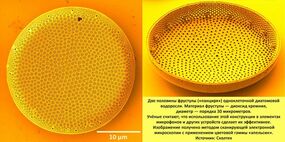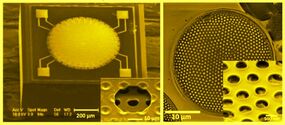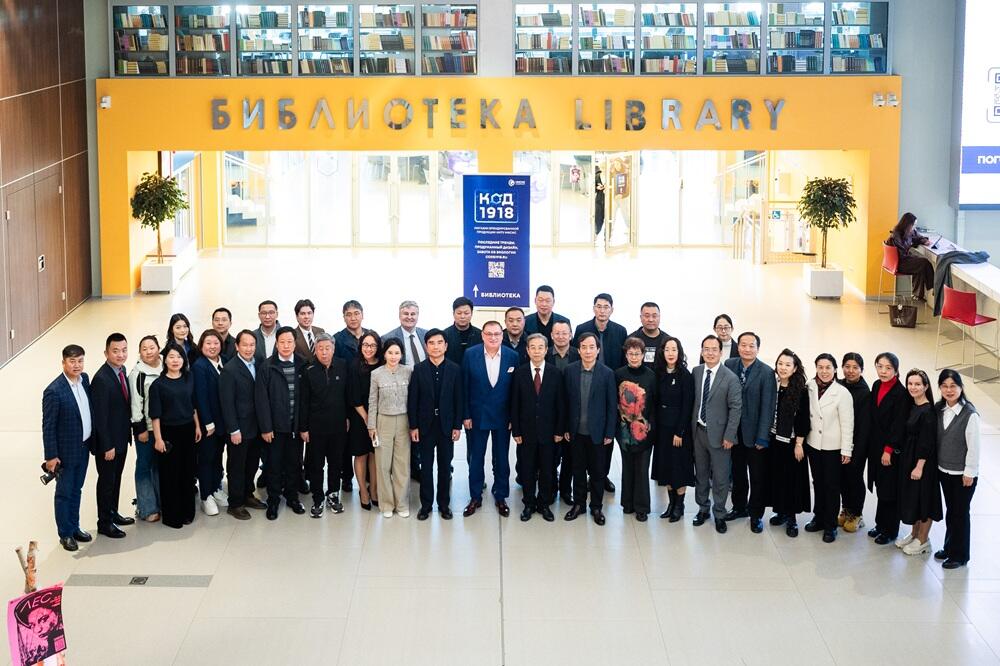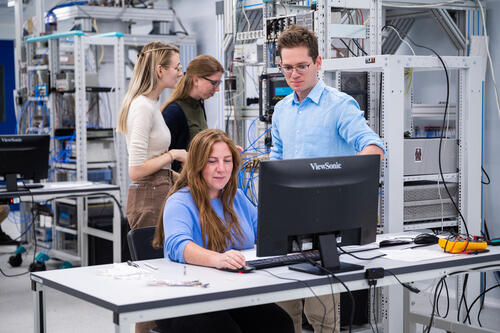NUST MISIS and Skoltech researchers reported another breakthrough in their investigations of diatoms, the fascinating single-cell algae that may hold many secrets to advanced technological solutions emulating nature. Specifically, these algae lend themselves as models for membranes used in high-performance miniature microphones with low power consumption, as well as for photonic crystals, which are essential for light signal processing in the ultrafast and energy-saving devices of the future. The study was published in Scientific Reports.
Diatoms are a large group of unicellular algae with characteristic hard, lightweight, porous shells made of silicon dioxide, called frustules. A remarkably successful life form, diatoms are ubiquitous in oceans and freshwater bodies, accounting for as much as a quarter of the Earth’s organic material. They capture carbon dioxide via photosynthesis and provide about one-fifth of the entire oxygen supply on the planet. Diatoms are one of the principal components of plankton.
“The evolutionary success and importance of diatoms to the Earth habitat means that their structure is optimal simultaneously in many respects — photonically, mechanically, biochemically — while also minimizing weight and material consumption,” said Alexey Salimon, a senior research engineer at Skoltech Engineering and Chair of Physical Chemistry at NUST MISIS, who has been facilitating the long-term collaboration in applied materials engineering between the two institutes.
The intricate lacelike exoskeletons of diatoms “provide an unending source of inspiration for the development of new materials and devices,” the article in Scientific Reports says. They are already used to remove heavy metals from water and as mild abrasives in toothpaste. Among the technologies that could benefit from components mimicking diatom frustules are microelectromechanical systems and photonic integrated circuits. The former are the basis of so-called MEMS microphones, which are sensitive, compact, and energy-efficient. The latter are microchips that operate on photons — a faster and more energy-efficient alternative to today’s microelectronics.
“To utilize these structures in biomimetic technology, engineers require a detailed understanding of their behavior and makeup,” commented the lead author of the study, Skoltech Photonics PhD student Julijana Cvjetinovic. “This particular study furnishes unprecedented new insights into how the static and dynamic mechanical properties of diatom frustules are related to their structure.”
Diatoms attracted the attention of scientists soon after the invention of the optical microscope in the 17th century. Although our understanding of these algae is still incomplete, our microscopy tools have also become better and more versatile. University of Oxford’s Alexander Korsunsky, the co-principal investigator of the study and a visiting professor at Skoltech, said: “After a quarter of a century of my working on the topic, it is satisfying for me to see the good use of nanoindentation inside the Tescan Solaris focused ion beam scanning electron microscope, acquired by Skoltech upon my recommendation and now housed at the Institute’s Advanced Imaging Core Facility. Eugene Statnik’s and Pavel Somov’s virtuoso use of this complex setup made it possible to collect unique video evidence of diatom deformation, whilst Sergey Luchkin’s masterful application of atomic force microscopy enabled the quantitative evaluation of the elastic modulus and hardness.”
By combining atomic force microscopy and nanoindentation — that is, poking the sample with a diamond tip and measuring its deflection — the team explored the mechanical properties of both dried frustules and wet ones with the organic material intact. The analysis encompassed hardness, flexibility, and vibrational characteristics, investigating how they are related to the frustules’ complex structure with two layers and distinct patterns of pores on the inside and on the outside. The interrogated algae ranged from 30 to 40 micrometers in diameter.
“Perhaps the most exciting feature we have identified is this distinction between the harder inner layer that serves as a foundation, and the softer and more porous outer layer on top of it. It was exciting to see the frustules oscillate but not break under cyclic loading, confirming our surmise about the origins of their flexibility and strength. We are the first to observe this behavior and to report the comparative mechanical characteristics of living diatom cells and cleaned frustules without the organic components,” Cvjetinovic added.
The co-principal investigator of the study, Professor Dmitry Gorin, who heads Skoltech’s Biophotonics Lab, said: “We believe that further inquiries into diatom frustules will eventually provide a pathway to the diverse range of currently anticipated applications — from MEMS microphone membranes that visibly resemble algae [see image below] to composite materials that replicate the diatom structure and incorporate additional components and functions.”
The research reported in this story was supported by the Russian Science Foundation (Grant No.
project manager: Professor Dmitry Gorin) and the Russian Ministry of Science and Higher Education (Project No.





